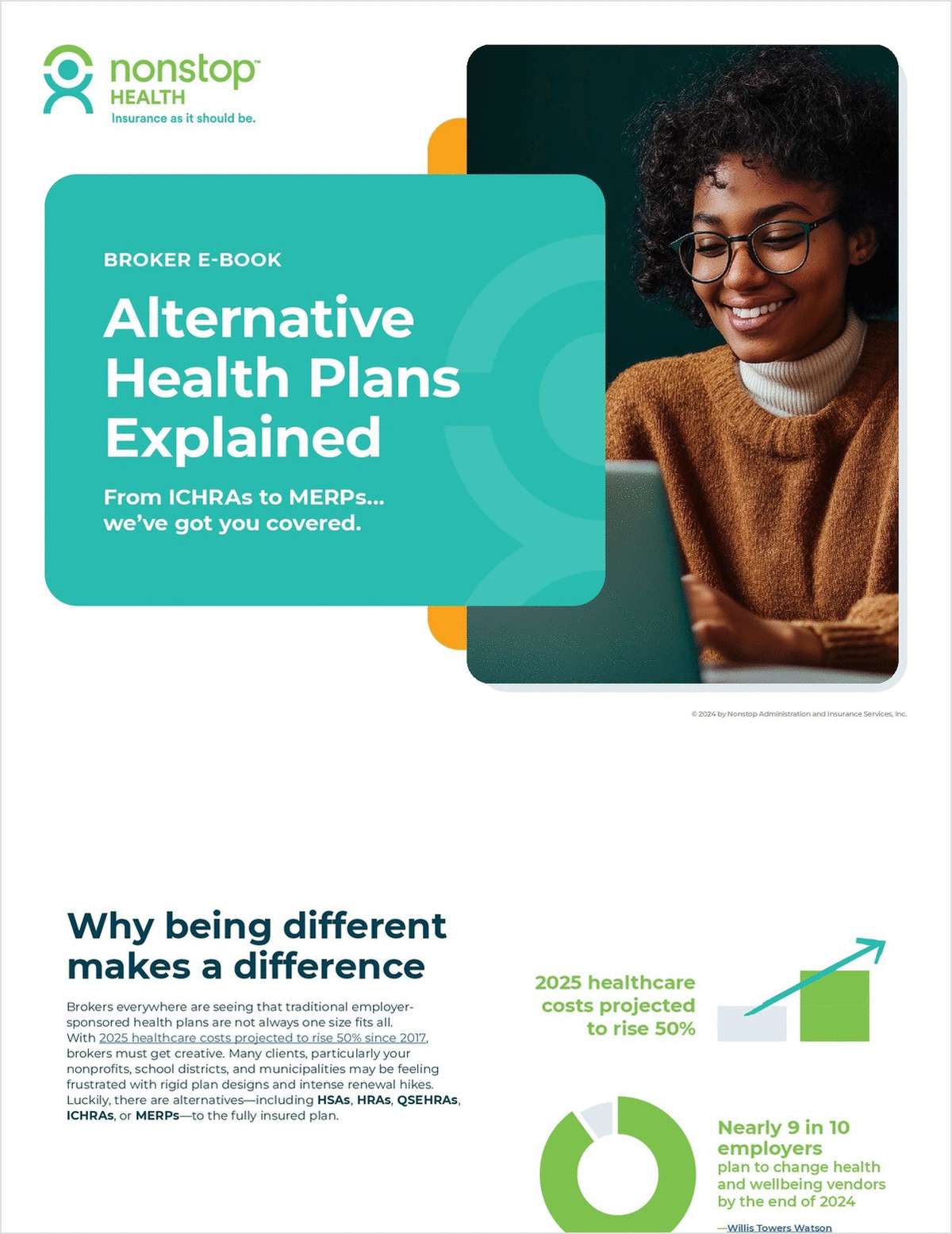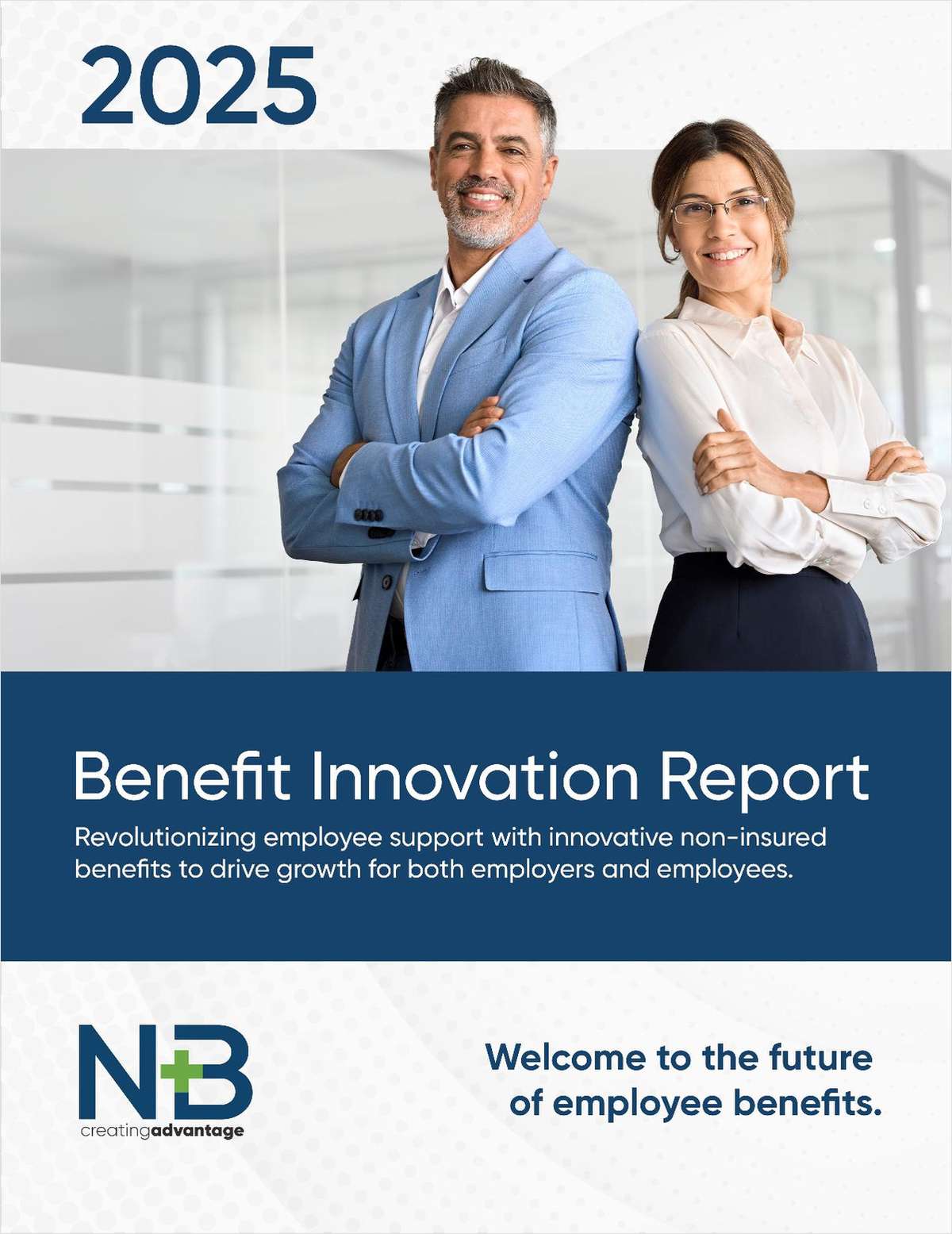The ad is confusing. That's the point. “Your CEO wants a PPO. COO an HMO. CFO to IPO. You need a good TPA,” announces the piece, created for Entrust, a third-party benefits administration company in Houston.
The clever spoof underlines a real problem. The benefits administration world is awash in alphabet soup, with acronyms to denote everything from medical products and procedures to laws and regulations. As long as everyone in a conversation knows what an acronym means, the shorthand referrals are harmless ways to save a little time.
Trouble can arise, however, when not everyone knows what a given acronym means. “The use of acronyms in our industry can lead to confusion for employees or their dependents, and it's incumbent on us to be as clear as possible so they understand their benefits and their rights as they relate to those benefits,” says Robyn M. Jacobson, Entrust's chief operating officer. Achieving that clarity, she says, means paying attention to how and where you use acronyms.
A necessary tool
For all their potential for confusion, acronyms serve a legitimate function, allowing people in the benefits industry—or any group—to say and write things faster.
“I wouldn't want to say Consolidated Omnibus Business Reconciliation Act instead of COBRA every time I refer to that law,” says Patsy Grooms, chief operating officer at North American Administrators in Nashville.
“Acronyms are the new way of life,” agrees Tina Ann Davis, general counsel at Flex-Plan Services Inc., a third-party administrator in Bellevue, Wash. They're quick and concise, she notes, a perfect fit for email and text messaging.
As specific acronyms become common, some of them enter the standard lexicon. When Grooms refers to COBRA, for instance, she can be fairly sure that her audiences understand that she's not talking about snakes. That acronym has joined scuba, laser, and FYI as a commonly understood abbreviation.
Other acronyms are common in the benefits industry—but not among the general public. ERISA is one example.
Confusion is a virtual certainty when a benefits company uses an acronym to mean something different than it means in common parlance. Grooms' firm, for instance, uses DOA as a shorthand for details of accident—not dead on arrival.
Davis notes that she “has a hard time disconnecting from the benefits lexicon when I'm talking to family and friends, and they'll say that they have no idea what I'm talking about. That's when I understand how non-intuitive the benefits industry can be.”
Managing muddle
There's no escaping acronyms—so benefits professionals have to manage them. That can be particularly tricky for third-party administrators, whose job description puts them in contact with both other industry professionals, including brokers and human resources executives, and also with clients and employees. Many third-party administrators find that their benefits industry colleagues are familiar with many of the acronyms they use. Those same acronyms, however, can leave clients and employees in the dust.
Third-party administrators often adopt a two-part strategy: They use acronyms as much as they like with other industry professionals, being careful to check in when they hear an unfamiliar term or sense that someone doesn't understand what they're saying.
“If I'm getting a communication from another source and the acronym is different, I check to make sure we're talking about the same thing,” Davis says.
The same professionals avoid acronyms, or use only those in very common circulation, when they talk with clients and employees. David Rubenzahl, president of Maxon Administrators in Irvington, N.Y., follows that two-part strategy. With other benefits professionals, he uses acronyms.
With clients and employees, however, “I don't use acronyms. I use the actual terms they refer to until they become part of the lexicon,” Rubenzahl says. That process, he estimates, takes between eighteen months and two years.
“With clients, I use acronyms that everybody knows, like HMO or PPO. I've never run into anybody who doesn't know what those mean,” he says.
Using acronyms at all, of course, means trying to keep up with the new ones—and that's not easy. New laws, treatments and other unwieldy terms are a bountiful source of new acronyms.
“Every area of our business has acronyms associated with it: claims paying, the administration of our plans, and all of the legislation that comes down,” Grooms says, adding that different companies may use different terminology. That exposure keeps benefits professionals encountering new, acronym-based terminology, especially when they go from one company to another.
New health care legislation is a particularly generous source of new abbreviations, Davis says, citing the Center for Consumer Information and Insurance Oversight as just one example.
As health care reform moves along, she says, the acronyms it generates will become better known.
“But as we move toward full implementation, we'll have departments that are implementing different sections of the law. Those departments will spawn their own new acronyms, so we'll have more unfamiliar acronyms before we have fewer,” she points out. Those acronyms may stay obscure or become well known, depending on how central they are to important concepts within the new law and how frequently they're used.
All these new acronyms can require special care, to make sure there's no misunderstanding.
No matter whom she's addressing, Davis says, “I definitely try to reference the actual law before I use any acronym.”
She's particularly careful to write out terms when she first mentions them in an email or other written communication, she says, noting that this is also a good legal practice.
“We try to explain at least once what we're talking about by its official, total name, so we aren't making assumptions about what our audience understands,” Grooms agrees. “We use NAA for North America Administrators, and I would never use that on the first mention without writing North America Administrators and then putting NAA in parenthesis.”
Some third-party administrators even go upstream, to try and stem acronyms at their sources. Jacobson and other members of the Texas Association of Benefit Administrators and Society of Professional Benefit Administrators work directly with the regulators, medical associations and lawmakers who often create benefits industry acronyms in the first place.
“We work behind the scenes on a regular basis to clarify and define our roles, and we specifically try to stay away from acronyms,” Jacobson says.
The work proceeds in small steps, she adds. Jacobson and other benefits industry professionals have met with the Texas Medical Association multiple times to clarify that a TPA is a third-party administrator, not a PPO.
Staying clear for clients
Even third-party administrators who vow to use only widely understood acronyms around clients and employees can find themselves misunderstood. That's because it's often difficult to know which acronyms a particular audience understands, and even harder to know whether their particular translation of that acronym is correct.
“It's common during a meeting with a prospective employer or during enrollment meetings for a question to arise that requires more explanation in order to be clear,” Entrust's Jacobson says. “For example, a PPO is a preferred provider organization, otherwise known as a network. But some clients think the PPO is their plan. That's an example of how an acronym can confuse an end user.”
The distinction can be legally important, Davis says, noting that the right word might affect how contracts are written.
“Using the word the customer understands can be important, but depending on the situation, you may also need to do some customer education,” she says.
Glossaries help, particularly as part of material that people can later read on their own. But glossaries do little to help during live presentations. Some clients, like many benefits professionals, will ask for clarification when they hear an unfamiliar acronym. Others, however, never speak up.
“I've done seminars where a colleague has noticed that someone's eyebrow is raised and they have no idea what's going on,” Davis says. “I go back and explain.”
Many bright people simply aren't familiar with benefits industry lingo, and some may not feel comfortable interrupting a presentation or conversation to get more information. “We deal with many people who don't have access to some of the education that others might have. Our clients and participants are doing everything, including cleaning lumberyards and houses. We need to be sensitive to their ability to understand what you're talking about and encourage questions,” Grooms says.
Sometimes that means thinking hard about potentially unfamiliar terms.
“Someone once didn't understand what the ID in ID card stood for,” Grooms says.
In addition to trying to correct misunderstandings as they occur, Jacobson and other members of the Texas Association of Benefit Administrators and Society of Professional Benefit Administrators work directly with the regulators, medical associations, and lawmakers who often create benefits industry acronyms in the first place. “We work behind the scenes on a regular basis to clarify and define our roles, and we specifically try to stay away from acronyms,” Jacobson says.
In the end, Jacobson says, benefits professionals have to take responsibility for making sure colleagues, clients, employees, and other audiences understand them.
“We need to do whatever necessary to clarify what we mean,” she says. “The clearer we can be, the better the health care market will be.”
Complete your profile to continue reading and get FREE access to BenefitsPRO, part of your ALM digital membership.
Your access to unlimited BenefitsPRO content isn’t changing.
Once you are an ALM digital member, you’ll receive:
- Breaking benefits news and analysis, on-site and via our newsletters and custom alerts
- Educational webcasts, white papers, and ebooks from industry thought leaders
- Critical converage of the property casualty insurance and financial advisory markets on our other ALM sites, PropertyCasualty360 and ThinkAdvisor
Already have an account? Sign In Now
© 2024 ALM Global, LLC, All Rights Reserved. Request academic re-use from www.copyright.com. All other uses, submit a request to [email protected]. For more information visit Asset & Logo Licensing.








